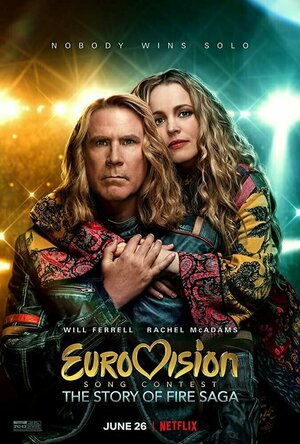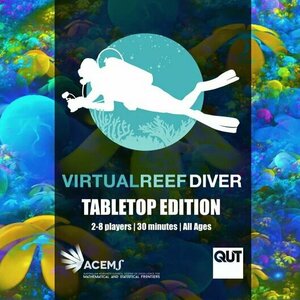Bob Mann (459 KP) rated The Light Between Oceans (2016) in Movies
Sep 29, 2021
For this is a good old-fashioned weepy melodrama: leisurely, character based and guaranteed to give the tear ducts a good old cleaning out.
It’s 1918 and Michael Fassbender plays Tom Sherbourne, a damaged man seeking solitude and reflection after four years of hell in the trenches. As a short-term job he takes the post of lighthouse keeper on the isolated slab of rock called Janus – sat between two oceans (presumably as this is Western Australia, the Indian and the Southern Oceans). The isolation of the job previously sent his predecessor off his trolley.
En route to his workplace he is immediately attracted to headmaster’s daughter Isabel (Alicia Vikander) who practically THROWS herself at Tom (the hussy), given that they only have snatches of a day at a time to be together during shore leave. Tom falls for her (as a hot blooded man, and with Vikander’s performance, this is entirely believable!) and the two marry to retire to their ‘fortress of solitude’ together to raise a family and live happily ever after…. or not… For the path of true motherhood runs not smoothly for poor Isabel, and a baby in a drifting boat spells both joy and despair for the couple as the story unwinds.
(I’ll stop my synopsis there, since I think the trailer – and other reviews I’ve read – give too much away).
While Fassbender again demonstrates what a mesmerising actor he is, the acting kudos in this one really goes again to Vikander, who pulls out all the stops in a role that demands fragility, naivety, resentment, anger and despair across its course. While I don’t think the film in general will trouble the Oscars, this is a leading actress performance that I could well see nominated. In a supporting role, with less screen-time, is Rachel Weisz who again needs to demonstrate her acting stripes in a demanding role. (Also a shout-out to young Florence Clery who is wonderfully naturalistic as the 4 year old Lucy-Grace.)
So this is a film with a stellar class, but it doesn’t really all gel together satisfyingly into a stellar – or at least particularly memorable – movie. After a slow start, director Derek Cianfrance (“The Place Beyond the Pines”) ladles on the melodrama interminably, and over a two hour running time the word overwrought comes to mind.
The script (also by Cianfrance, from the novel by M.L.Stedman) could have been tightened up, particularly in the first reel, and the audience given a bit more time to reflect and absorb in the second half.
The film is also curiously ‘place-less’. I assumed this was somewhere off Ireland until someone suddenly starting singing “Waltzing Matilda” (badly) and random people started talking in Aussie accents: most strange.
Cinematography by Adam Arkapaw (“Macbeth”) is also frustratingly inconsistent. The landscapes of the island, steam trains, sunsets and the multiple boatings in between is just beautiful (assisted by a delicate score by the great Alexandre Desplat which is well used) but get close up (and the camera does often get VERY close up) and a lack of ‘steadicam’ becomes infuriating, with faces dancing about the screen and – in one particular scene early on – wandering off on either side with the camera apparently unsure which one to follow!
A memorable cinema experience only for Vikander’s outstanding performance. Now where are those tissues…
BankofMarquis (1832 KP) rated Elvis (2022) in Movies
Jun 28, 2022
And…the resulting film - appropriately called ELVIS - works very well, but not because of Luhrmann’s Direction/Style but more because of the TERRIFIC performance at the center of this picture - and, no, I’m not talking about Tom Hanks as Col. Parker.
ELVIS follows - with the usual Luhrmann quick/cut, flashy style - the rise, fall, rise and (ultimately) death of Elvis Presley. Starting with his boyhood in Tupelo, Mississippi - where he found his rhythm in the roots of African-American Gospel/Spirituals - to his ascension to superstar, this films tries to tell it all, mostly through the shadowy viewpoint of Elvis’ Manager, Col. Tom Parker (a heavily made-up Tom Hanks).
And that is part of the problem with this film - it tries to tell TOO big a story, so while some items are covered in slow, glowing detail (like Elvis’ discovery of the music that will be his trademark), while other items (his movie career) are glossed over quickly in a montage. This is out of necessity, for this film is already 2 hours and 40 minutes long, but it does make this film feel somewhat disjointed - especially when you add Luhrmann’s trademark disorienting quick/cut, stylistic directing style. At times I just wanted to yell at Lurhman to lock his camera down in one position so my eyes (and brain) can settle down and watch what’s going on.
The other issue is the viewpoint of this film - it isn’t consistent. Is this a movie about Elvis? Is this a movie about a conman manipulating Elvis? It starts out following Col. Parker as he discovers Elvis and manipulates him to be his exclusive act, but then we leave Col. Tom and follow Elvis for long periods of time before being drawn back into Col’s Parker’s web, so there is confusion as to who’s story we are telling. In the end we tell both, and each one suffers a little bit because of this.
HOWEVER - and this is an important point - these issues are pushed to the back as minor flaws as the central performance of Austin Butler (Wil Ohmsford in the terrible adaption of THE SHANNARA CHRONICLES on TV) as Elvis is AMAZING. It is a captivating, multi-layered performance both on-stage and off. He has created a character that you are drawn to watch and the off-stage Elvis sets the stage for the charismatic, on-stage Elvis that we all know. Butler did his own singing/performing in this film and it is much, much more that “just” an Elvis impersonation. He personifies “The King” and Butler’s name better be called at Awards time. It is that good of a performance, one that should catapult this young man to stardom.
Fairing less well is Tom Hanks as Col. Parker. While he is game under all that make-up, the character is just not written with any nuance and comes off as a one-dimensional villain, constantly lurking in the background. This character just wasn’t interesting enough to hold the screen - especially against Butler.
But see this film to rekindle the spirit of Elvis through the interpretation of Butler, you’ll be glad you did.
Letter Grade: A-
8 stars (out of 10) and you can take that to the Bank(ofMarquis)

Universalis
Lifestyle and Reference
App
Join the thousands of people who use Universalis daily! You will get: • The Catholic liturgical...

hayu - reality TV shows on demand & celebrity news
Entertainment
App
The hayu app is the home of the best reality TV and the juiciest celebrity gossip – all in one...

Cost A Cake Pro
Food & Drink and Productivity
App
** NUMBER 1 Food and Drink App in 15 countries including UK and Ireland, Top 10 in 32 countries...

Embark: User friendly personalised nautical charts
Navigation and Travel
App
Embark gives you FREE and updated charts, crafted on data from the Hydrographic Offices. A smooth...
Heather Cranmer (2721 KP) rated Don't Stop Believin' in Books
May 28, 2019
Olivia Newton-John rose to fame in the United States as the character of Sandy in the movie Grease. She also had a bunch of hit songs and records afterwards. Olivia's autobiography does mention her rise to fame although I felt as if there wasn't enough time spent on her rise to fame. She does write about her time with Grease and other films as well as recording her songs throughout the book. I felt the movies and songs were written about well.
We get a taste of her life as a child in England and Australia, although I felt she didn't discuss her pre-fame life too much. I would have liked to read more about her childhood instead of just being rushed into when she started performing. I know Olivia Newton-John likes to keep her private life out of the limelight, but when writing an autobiography, it's important to give the reader a little more details than what Don't Stop Believin' gave us.
There was so much name dropping throughout this book! While I understand that famous people know other famous people, sometimes I felt as if Olivia was dropping names just for show instead of because it fit the story. You have a lot of famous friends. We get it!
Another thing that annoyed me about the book was how some parts seemed like an advertisement for her Olivia Newton-John Cancer Wellness and Research Centre as well as for her husband, John Easterling's, herb company. I know she's done so much for her cancer center, (which I give her mad props for), but she goes on and on about how great and lovely of a place it was especially after she was an inpatient there. Of course the staff would treat her better when her name is on the building! There's more than one chapter devoted to how great the place is. I'm sure it is lovely, but I felt like I didn't need to a chapter (and more) about how great it is. As for her husband's herb company, she went on and on towards the end of the book how his herbs really helped her out which is great, but again, does the reader really need the specifics and being told over and over again how helpful it was?
The major thing that annoyed me was how preachy Don't Stop Believin' was in a lot of chapters. In fact, it made me feel guilty sometimes that I rely on modern medicine. Olivia writes how she'd rather take the natural approach to fighting off viruses and diseases, and I get that because I don't like to take medicine needlessly either, but sometimes, it's the best thing. However, I just felt that Olivia was berating those who choose to go the medicinal route. I felt like she was implying that natural remedies work better than modern medicine. This can be dangerous especially if someone gets off their medicines they need to survive to try the natural approach. People should always discuss any changes of medication with their doctors.
To me, Don't Stop Believin' writes like someone who's always been privileged and sheltered throughout their life. A lot of it feels like Olivia Newton-John is out of touch with reality and like she's living in La-La Land. I just found it hard to relate to her throughout the book. Yes, she has gone through some hardships such as deaths in the family, her cancer diagnoses, and her ex-boyfriend disappearing, but for the most part, her autobiography is just too sunshine and rainbows for me to truly relate.
Don't Stop Believin' flows beautifully though, and the writing is done very well, so it has that going for it. I did find myself enjoying the book most of the time when Olivia wasn't been preachy or advertising something. There were some interesting tidbits about her life throughout the book.
Trigger warnings include some profanity use, death, cancer, drinking, and smoking.
Overall, Don't Stop Believin' isn't a bad book, quite the contrary. It's just a bit too hippie dippy for me to have truly enjoyed it to its fullest. I did find the book interesting though despite some flaws. I would recommend Don't Stop Believin' by Olivia Newton-John especially to those who have been diagnosed with cancer as this book does come with a bunch of positivity when it comes to dealing with cancer.
Bob Mann (459 KP) rated Eurovision Song Contest: The Story of Fire Saga (2020) in Movies
Jun 27, 2020
We start with the song recently voted the number one Eurovision song of all time by UK viewers: "Waterloo" by Abba. Young Lars Erickssong (LOL) (Alfie Melia) is transfixed watching the 1974 Eurovision winner with his recently bereaved father and local Lothario Erick (Pierce Brosnan). (Mental note to women: never marry Brosnan on screen... he gets through wives faster than you can murder "S.O.S."). Also present are his friends and young Sigrit ("probably not by sister") Ericksdottir (Sophia-Grace Donnelly). Lars vows to one day stand on that stage and make his father and his remote Icelandic fishing village proud.
Now all grown up, Lars (now Will Ferrell) and Sigrit (now Rachel McAdams) are still pursuing their dream of representing Iceland in the upcoming Eurovision Song Contest. They are, of course, dreadful - - so they should fit right in! But their way is blocked by the immensely talented Katiana (Demi Lovato) and all seems hopeless. Will Sigrit's faith in the power of the Elves see them through?
There's an obvious problem here. The Eurovision Song Contest is in itself so bat-s**t bonkers that it is almost impossible to spoof. (If anyone is not on this wavelength, checkout the genuine Russian entry in this year's (cancelled) contest on Youtube). But the team here (writers Will Ferrell and Andrew Steele and director David "The Judge" Dobkin) do a really great job. I'd love to know what a US audience - who I guess will mostly be unfamiliar with Eurovision - make of this. Since Australia are now honorary Europeans in the contest.... wouldn't it be great if there was a Mexican mariachi band attending and a country and western act from the States? (Brits would love the US to be involved.... as spoofed in the film, there's only one country European's hate more than the UK.... be nice to have someone else to join us in the "nul points" club!)
Wherever you may be on the "Ferrell-funny-or-not-ometer", there's one thing I hope we can all agree on here, and that is that Rachel McAdams continues to shine as a comic lead. She was fantastic in "Game Night" - one of my favourite comedies of recent years - and here she is both gorgeous and hilarious. She knocks it out of the park playing the elf-loving Icelandic pixie with the golden voice. (McAdams "sings" but is significantly "helped" in the mix by Swedish pop star Molly Sandén (aka My Marianne)).
Here she even gets to almost reprise her wonderful "YEESSSSS! Oh no, he died!" line from "Game Night".
Almost matching her in the scene-stealing stakes though is Downton's Dan Stevens as Lemtov: a Russian 'Tom Jones'-like contestant singing "Lion of Love" ("Let's get together; I'm a lion lover; And I hunt for love!"). He's DEFINITELY not gay ("There are no gays in Russia") but are his multi-millions enough to turn Sigrit's head?
For those who love their annual Eurovision parties, there are also an impressive array of nice cameos that will delight.
But where the film-makers really score (no pun intended) is making the music so fitting. Some of the tracks make you think "Yeah, if this was the real content, this might have got my vote". Director Dobkin is quoted as saying "It's okay if it's funny, but it has to be really good music. It has to still be great and just kitschy enough to be Eurovision, because that's part of what's fun about Eurovision" (Source: Vulture). Very true. This success is down to the involvement of pop writer/producer Savan Kotecha on the project: the man behind hits by Katy Petty, Ariana Grande and Ellie Goulding.
A comedy needs to make me laugh, and this one really did - numerous times. It's not just the dialogue. Some of the cut-away scenes are priceless and perfectly executed: jumping whales; a collapsing glacier; a small slamming door!
Sure, it borrows from a number of other sources in its plot: most notably THAT episode of "Father Ted" and the rap-battle scenes from "Pitch Perfect". And sure, some of the outRAGEOUS Icelandic accents sometimes swerve into an alarming mix of Indian, Welsh and Caribbean dialects! But above all, this is movie with real heart. The plot is pretty well signposted, but the finale still packs a (surprisingly) hefty emotional punch, and it leaves you with a really nice afterglow.
As we struggle out of Covid lockdown, it may not be a vaccine, but it is a pretty good medicine for the side-effects. Did I love this? Jaja Ding Dong!
(For the full graphical review, please check out One Mann's Movies here - https://bob-the-movie-man.com/2020/06/27/one-manns-movies-film-review-eurovision-song-contest-the-story-of-fire-saga-2020/ ).
Purple Phoenix Games (2266 KP) rated Virtual Reef Diver in Tabletop Games
Nov 19, 2020
Virtual Reef Diver is an educational card game that helps to bring awareness to happenings of the Great Barrier Reef and even implements ways for players to participate in the studies of this natural wonder. The winner(s) of the game is (are) the team who scores the most points at the end of three rounds, and also hopefully learns several new things along the way.
DISCLAIMER: We were provided a copy of this game for the purposes of this review. It is not my intention to detail every rule in the game, but to give a general idea of the feel of the game flow. You are invited to download the rulebook, purchase the game through the publisher directly, or through any retailers stocking it. -T
To setup, shuffle the Action card deck, the Reef Disturbance deck, and the Reef decks separately, placing them on the table. Each team, or player, may be given a Classification Card (reference card) as well. From the Reef deck deal 12 cards face-up on the table in a 3×4 (or 4×3 whatever) grid. Each round a new set of 12 cards will be dealt to the table. Determine the starting player/team and the game may begin!
Players will decide at the beginning of the game which mode they wish to play: Standard or Advanced. I will be previewing the Standard mode. On a turn a player will choose a card from the grid and attempt to identify its type: Hard Coral, Soft Coral, Algae, Invertebrates, Fish, Marine Mammals, or Technology. If correct, the player will collect the card as a trophy and it will be worth VPs at the end of the game. The next player may then take a turn identifying the type of card and collecting if correct, or leaving on the table if incorrect.
All cards are worth VPs except the Technology cards. These, once correctly identified, will allow the player to exchange it for an Action card to be used in the future. Action cards can be very powerful at different times during the game.
Once all 12 cards have been taken for the round the players will reveal a Reef Disturbance card. These typically will have players discarding cards of a certain type, or several cards at once. Some Action cards will negate these effects, so having them ready is great strategy. The grid may now be replenished and the second round started. The game ends at the end of the third round and players count up points to determine the winner!
Components. Again, while this game is in production, I treated it as a preview, and these are final components. That said, this game exists to benefit the Australian Government-funded citizen science website ACEMS. Further, this game is a bunch of cards in a box. The photos on the main Reef cards are mostly quite nice, with a couple looking perhaps a little outdated. The other graphics on the game are fine. They don’t get in the way, and are functional. The cards themselves are also fine quality. Nothing in the box is exquisite nor subpar at all.
The gameplay is something that I am struggling with as a reviewer. You see, this is a VERY different game depending on the mode you play. I will probably always play it on Standard mode because I can guess what type a card may be, but the Advanced mode also awards extra points for identifying the common name, taxonomic family (scientific name), and habitat of each card’s subject. That is for eggheads, man! I’m just a normal American-educated gamer. I don’t know that stuff! So the Standard mode is relatively easy to play and be good, where the Advanced mode is for those times when you have, let’s say, a Scrabble or Chess snob who revels in being the most intellectual person in the room. That’s not at all a bad thing, and I hope any real eggheads know I am kidding around. I am merely jealous at how smart many people are.
That being the case, this game would work well for a group of younger gamers eager to learn about the marine life on the Great Barrier Reef, or those looking for a relaxing quasi-trivia style card game. Need to amp it up and play on Advanced mode? Go for it. I’ll still be flailing about like a clownfish out of water trying to understand the difference between hard and soft coral and how to distinguish them. Seriously. Take a look for yourself and help out a VERY worthy cause in the process.
Gareth von Kallenbach (980 KP) rated Total Recall (2012) in Movies
Aug 7, 2019
The premise follows the original in only a rough sense. Sometime in the future, the world has been left mostly uninhabitable due to a deadly chemical war across the globe. Humanity has been left to residing in the only remaining habitable landmasses – Western Europe and “The Colony”, the latter being modern-day Australia. Because air travel is now impossible, the only travel between the landmasses is through a massive elevator called “The Fall” that cuts through the center of the Earth. Douglas Quaid (Colin Farrell) is a factory worker who works in Europe but lives in “The Colony” with his wife, Lori (Kate Beckinstale). His chronic nightmares lead him to become interested in the “Rekall” service – a machine that can implant memories into customers. His interest will lead him on a wild journey with Melina (Jessica Biel) to learn about his true self as well as secrets of Cohaagen’s (Bryan Cranston) tyrannical administration.
The problems of the film really start with the premise. While I enjoy the creativity of something like “The Fall”, it is simply too ridiculous to take seriously. They deserve credit for coming up with a relatively unknown science fiction concept, but an elevator that travels through the center of the Earth? Peoples’ suspension of disbelief can only be pushed so far. It serves a practical purpose in the plot – to create the conflict between “The Colony” and the mainland and between the government and the Resistance. Yet, too much time is spent trying to introduce this concept and make it seem plausible than the film should. It honestly seems easier to just use the original film’s conflict between settings – Mars and Earth. I have to ask, what makes an elevator between two lands more contemporary of an idea than a conflict between colonial Mars and Earth. This is especially true considering recent news that a Mars colony might be seen in our lifetimes.
The other problems are more literary. Colin Farrell’s Douglas Quaid is portrayed very well throughout the film, and he manages to make the character satisfactory in the emotional portrayal of a man with a confused past and an insane situation. But even then, I have to say Arnold’s original portrayal seemed overall more human. The problem with Colin Farrell’s character is a mixture of performance and writing in his introduction. It is hard to believe him as someone so distraught over his nightmares that he absolutely feels compelled to go to Rekall. If they spent more time exploring his inner demons and how they are bringing his life down, then he would have been a much more compelling character. As it stands, he just goes through the motions of a protagonist. All of the other characters are the same way. Kate Beckinstale’s villainous Lori and Jessica Biel’s Melina are fairly shallow characters. They are not bad at their roles but that is all they, unfortunately, are: roles. Like Quaid, they just go through the motions, playing their part as clichéd character archetypes. Bryan Cranston is always awesome in any role, but in this he is not given much to work with. All he ends up being is just an evil tyrant with a megalomaniacal plot – with very little reason or background.
Those issues said, there are many things that do work. The pacing is good throughout, with no moments feeling awkward. The art design is exceptional, and there are no moments in the film that are boring to look at. To its credit, almost every scene is full of beautiful science-fiction design. The only complaint in this area is that some of the action scenes feel very cluttered due to the overall noise of The Colony’s design. The plot moves forward steadily, and it is overall simple to understand. That said, it is not without its own faults. The plot starts out great but becomes full of usual secret agent thriller clichés. Also, the plot becomes very campy, not to mention unbelievable, in its third act. The third act is also where there are the most plot holes – notable plot holes at that.
If you can shut your brain off for a couple hours, you can enjoy “Total Recall”. The film is pretty to look at and is absolutely packed with action sequences. All of the action sequences are well shot, well paced, and entertaining. The actors all do great with what they are given; but the problem is that they are not given much. They are all fairly flat characters, but are all satisfactory for the service of the plot – a plot that is well paced and understandable, but one that becomes campy, ridiculous, and peppered with notable plot holes. It is not as tightly written and directed to be a great secret agent thriller, and not as inspired to be a great science fiction story. The original was exceptional in its setting construction – pulling the audience into the amazingly designed Paul Verhoeven world. It was full of comedy and thrills, thought and design. As it stands, the moments that could really go far in establishing a passionate soul-filled, inspired world are instead spent on making quick references to those vary moments from the original. It could have established its own voice, its own heart and soul, but it just settles on being your clichéd average science fiction blockbuster.





